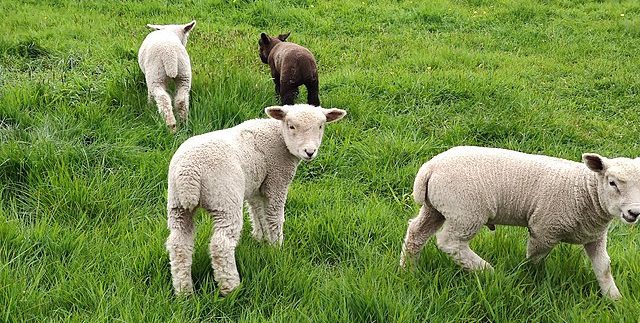Weeks after the UK popularised the world’s loneliest sheep, sheep rearing is back in the black, this time versus dog keeping.
It is lambing season in most of Britain, especially Cumbria, the hilly county to the northeast. Every winter and spring sees around 16 million ewes birth lambs. The spring lambing period usually coincides with the regrowth of new grass and colourful daffodils.
This season, however, dog attacks on lambs have become prominent and elicited response from the police. Reports of such incidences have even supplanted farmers’ protests to rank among the more interesting agricultural stories from the UK and Europe.
The BBC quoted Cumbria’s Sergeant Amanda McKirdy on February 16 saying that dog owners should attend their pets on leash around sheep.
Farmers think that this is happening because canine ownership rose during the Covid-19 period. For this reason, some of the dogs are not schooled in sheep rearing and bark at or even chase them. Worse, a few cases of the killing of lambs by dogs also came up recently in the vicinity of Cumbria.
Lambing Season and Spring
Traditionally, sheep raise lambs from early winter in November to late spring in May. In recent years, however, lambing has become common in spring.
Though spring will start as late as March 19 for 2024, the Cumbria landscape is already alive with seasonal vegetation. Hilly meadows have begun showing signs of the season through flowering daffodils and crocuses.
In the fair weather that follows winter, daylight hours extend and with them animals that keep indoors during winter roam. It is no wonder then that newly free dogs should exercise among sheep that are also enjoying the end of the chill.
Dog menace aside, Cumbria remains a star among sheep-rearing counties of Britain, with roughly 3 million head of sheep.
Sheep sighting in the surrounding Lake District is commonplace, given that this region has always depended on a herding economy. Today, owners mainly sell lambs at an early age, unlike before when they mostly sold the wool of ewes.
Times have changed for wool sheep but not the breeds. The Herdwyck breed, for instance, has been in the region since the 1100s. Since then, mountainous Cumbria has brought forth the Swaledale breed, one of the hardiest sheep in the whole of England.
Like one would expect for such an exclusive sheep-rearing area, prices for live sheep and lambs are costly in Cumbria. They start at 341 pences (£3.41) per liveweight kilo or £100 for the carcass of the animal.
